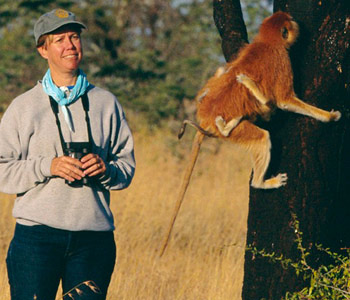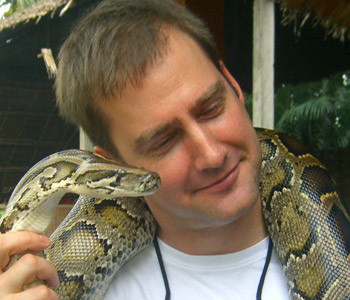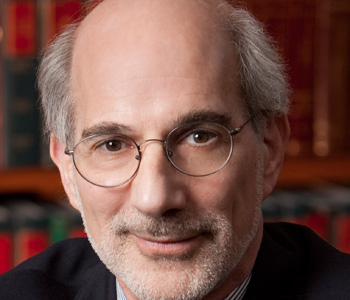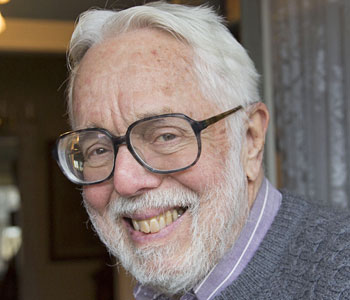Nadine Weidman
Killer Instinct: The Popular Science of Human Nature in Twentieth-Century America
Harvard University Press
368 pages, 6 1/8 x 9 1/4 inches
ISBN 9780674983472
Are human beings innately violent? And when scientists give us an answer to this question, should we believe them? Killer Instinct is a history of debates about human nature. My aim is not to settle these debates once and for all but rather to examine claims for a “killer instinct” as just that—claims that are created, packaged, and sold to an audience (that either buys or rejects them). I aim to understand the process by which such claims to knowledge are created: what strategies authors use to make their claims persuasive; how they are received; and what happens when they are disputed. My hope is to make twenty-first century readers more savvy and skeptical consumers of scientists’ efforts to tell us why we are the way we are.
My story begins in the late 1940s, when scientists who studied animal behavior began presenting themselves to popular audiences as authorities on human nature. Konrad Lorenz, an Austrian ethologist and specialist in bird behavior, made a name for himself by arguing that humans had an instinct for aggression. Lorenz was soon joined by Robert Ardrey, an American science writer convinced by South African fossil finds of the evidence for ancestral human violence. Both authors argued that the human aggression instinct must be acknowledged if it was to be controlled.
But even while their view was developing, a rival hypothesis arose to challenge it. This rival claim, brainchild of the American anthropologist Ashley Montagu, held that humans were loving and cooperative by nature. Montagu drew on evidence from cell biology, primatology, and cultural anthropology and gathered his own scientific allies. He derisively dubbed Lorenz and Ardrey “aggressionists” and became their most outspoken critic.
Between these two opposing views of human nature, a fierce and protracted debate arose. In the debate, Lorenz and Ardrey took a consistent tack against Montagu. Instead of treating his view as an alternative conception of human nature, they argued that he denied the existence of human nature altogether. Montagu was an “extreme environmentalist,” they said, who held that culture and upbringing shaped human behavior and nothing inherent at all. The critique was a caricature, but it stuck. The debate, rather than a conflict between competing visions of human nature, became a clash of extremes: nature versus nurture.
This framing persisted in later iterations of the debate. In 1975, the American entomologist E.O. Wilson proposed “sociobiology” as a new way to understand human nature, as a product of genes selected over eons by environmental pressures. Yet when sociobiology became enmeshed in debate, Wilson took the same tack against his critics as Lorenz and Ardrey had against Montagu. And even Wilson’s successors, the evolutionary psychologists, continued to use the nature-versus-nurture framing well into the twenty-first century.
I argue that this framing of nature versus nurture obscures a rich and complex history of twentieth-century ideas about human nature. Even more, it has served as a key strategy that purveyors of the claim for a killer instinct have used to bring that claim to public attention.
War is in our genes. Humans are “hard wired” to divide the world into “us” versus “them.” Men have a penchant for rape. We have all encountered claims like these in popular media, where they are often bolstered by scientific authority. I worry that such claims could become self-fulfilling prophecies: believe you are a killer, and you just might start to act like one.
All claims about human nature should be treated skeptically. Humanity is unimaginably diverse, and no attempt to define its “essence” will ever capture that diversity. Yet I’m also well aware that the claim for a “beast within” us is a fascinating one, a staple of popular science from Lorenz’s day to our own. I aim to understand how such claims exert their hold over audiences.
To do that, I treat claims about human nature as pieces of scientific knowledge that get constructed over time. To understand the process of knowledge-making, I adopt a method from the history of science: study debates. During periods of debate, before consensus forms, it is not yet clear which claims will solidify into fact and which will evaporate into myth or pseudoscience. By studying debates, historians reanimate the alternatives that once existed and help show why one of them prevailed. More than just evidence determines whose view will win out. Who the proponents are, and whose interests they serve, also weigh in the balance. Watching scientific debates unfold puts the process of knowledge-making under a microscope.
I examined archival sources, including unpublished letters and manuscripts, in addition to the published record. Using this method, I discovered that there was nothing inevitable about the killer instinct’s rise to prominence in 1960s America. I found that its rise was the result of strategies deliberately used to persuade, of audiences who took up the message and furthered it, of powerful interests that found it appealing, and of a culture obsessed with the problem of violence.
Even though the aggression debate took place in the public realm—in popular media and bestselling books—rather than in a laboratory’s private confines, and even though it concerned the “soft” sciences of human nature (not physics or chemistry), I believe that the methods historians have developed for studying debates can apply equally well here. Popular science is still a type of knowledge, one that people regularly encounter on bookstore shelves, in newspapers, and on social media. The process by which it attains the status of knowledge is well worth understanding.
My book, then, is the result of my own encounter with the popular science of human nature, my ongoing frustration with some of its claims, and my professional training as a historian of science, which taught me to question how we know what we know.
The decade-long, vituperative debate about the aggression instinct is the subject of chapter 5. The earlier chapters, 1 through 4, provide the lead-up, introducing the characters and the stakes on both sides of the debate. The later chapters, 6 and 7 present the denouement, describing what happened after the aggression debate reached its final stalemate and sociobiology entered the fray. The storyline is laid out in the Introduction, so a just-browsing reader might want to begin there to get a sense of the book’s trajectory. Those who want to cut to the main event should then turn to chapter 5.
Because the antagonists in the aggression debate were such vivid and colorful characters, the first half of the book introduces them and their worldviews. Who these people were, and what authorial personae they cultivated, mattered to the outcome of the debate. They really were characters, and I hope readers share my fascination with them. Chapter 1 introduces Konrad Lorenz, animal lover and sometime Nazi party member, who shared his home outside Vienna with wild animals, especially wild birds. Chapter 2 turns to Anthony Storr, an English psychiatrist who thought that acknowledging the aggression instinct, especially in men, was the key to healing mental illness. Chapter 3 brings on Robert Ardrey, Broadway playwright and Hollywood scriptwriter, who made a mid-life career change toward science writing when he visited Johannesburg, South Africa and saw his first pre-human fossil skull.
In chapter 4 I turn to Ashley Montagu, the English-born American anthropologist who hid his Jewishness under an aristocratic-sounding pseudonym. Montagu worked for UNESCO after World War II, as a critic of the concept of race, then ran afoul of the McCarthyite administrators at Rutgers University, where he was teaching, and was forced out of academia. As a bestselling author and regular on the TV talk show circuit, Montagu became the aggressionists’ main opponent. He gathered a group of allies, among them the Russian-born American sociologist Pitirim Sorokin, who set up a research center at Harvard in the 1950s to study love and altruism, and the American humanistic psychologist Abraham Maslow. Their view of human nature couldn’t have been more different from that of the aggressionists. Readers curious about those branches of the human sciences that study pro-social behavior—cooperation, altruism, and love—might be interested in chapter 4.
By viewing sociobiology as the phoenix that rose from the ashes of the aggression debate, and by linking the debate over sociobiology with its predecessor over aggression, I offer a new interpretation of E.O. Wilson, the science he invented, and the controversy it sparked. Readers interested in Wilson and sociobiology might turn to chapters 6 and 7. Chapter 7 argues that Wilson’s key critics were a group of feminist scientists led by the biologist Ruth Hubbard. This group and their critique of sociobiology got much less attention (both from Wilson and from historians) than Wilson’s male critics, and by including them I shed new light on the sociobiology debate. Readers interested in women and feminism in science might especially enjoy this chapter.
Since E. O. Wilson’s death in 2021, historians and biographers have been reassessing his legacy. My book contributes to that effort. The criticisms of sociobiology made by feminist biologists in the 1970s and 80s, especially by Ruth Hubbard and her colleagues, were never adequately answered in their day. Hubbard emphasized the variability of female primates’ behavior—as well as that of women across cultures—to dispute any notion of a universal, defining “essence” of femaleness. She also pointed out that the dominance of elite white men in the sciences led to scientific knowledge biased against women and people of color; sociobiology, she said, was a case in point. Wilson laughed off Hubbard’s critiques or otherwise tried to evade them. These criticisms, however, have lost none of their sting and they deserve a hearing. We must make sure that our own sciences of human nature are not susceptible to them.
My book is also an attempt to historicize human nature. Despite its pretense of transhistorical universality, the concept of human nature is time-bound and context-dependent, shaped by the historical circumstances in which it takes root. Both the aggressionists and Montagu were products of a war-torn world hungry for human unity. Both were seeking, in the concept of a biological human nature, a basis for human freedom and human rights. By the 1970s, however, partly as a result of the aggression debate, the concept of human nature lost this earlier meaning and instead became freighted with connotations of racism, sexism, and genetic determinism—connotations that persist in the evolutionary psychology popular in our own day. My book explains how this shift happened. I don’t think we can or should go back to the earlier meanings; rather, I aim to show readers that they existed. My larger point is that the concept of human nature has changed over time; it once looked different from the way it does now; and it could change again.
Finally, I hope to encourage readers to take all claims about human nature—killer instinct or otherwise—with a grain of salt. Popular media in the United States is replete with the casual anthropomorphizing of animals (from rape in ducks, to chimpanzee politics, to slavery in ants) and zoomorphizing of humans (applying evolutionary logic to explain and justify human behavior). We too often hear the excuse, “it’s in our genes.” Lorenz and Ardrey were not the first to make such cross-species comparisons—both considered themselves heirs to Darwin—but they did bring such analogies an unprecedented level of public notice. Popular evolutionary psychology and popular primatology in the present day follow in the tradition championed by these earlier scientists. Such analogizing, however appealing, is problematic. It is often shot through with pernicious stereotypes and brings us such dangerous claims as the killer instinct. We ought to be on our guard against it.




We don't put paywalls. We don't distract you with ads. We don't sell your data.
Please help to keep this running!